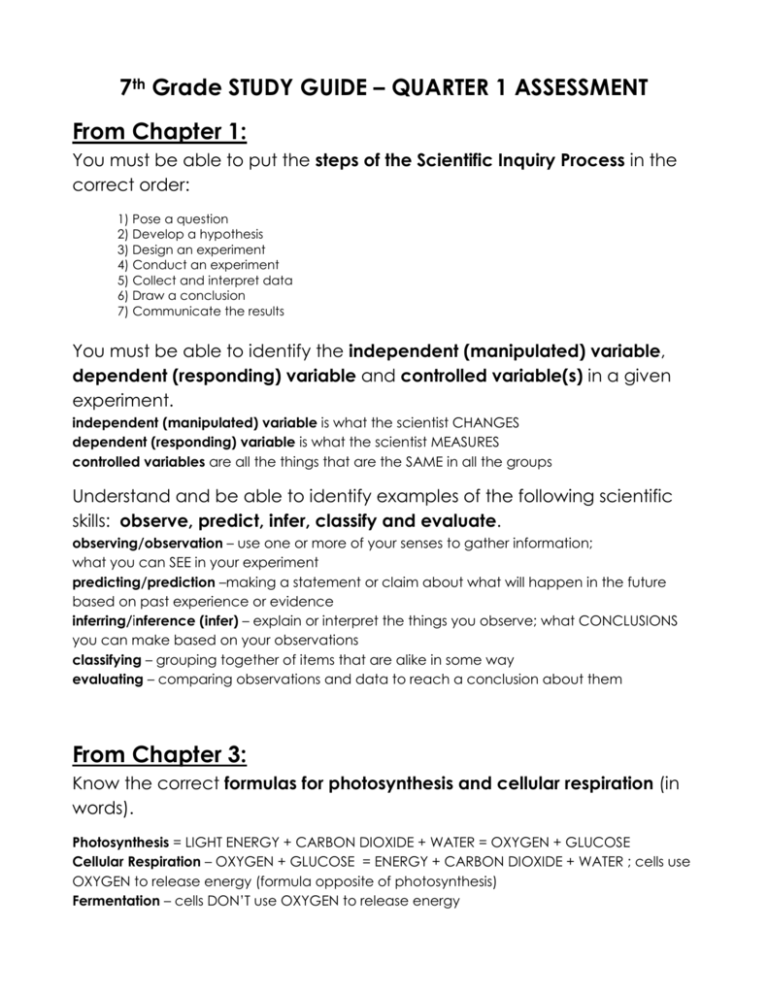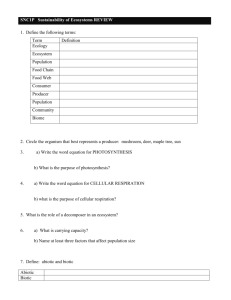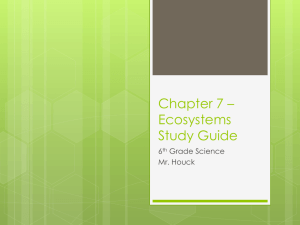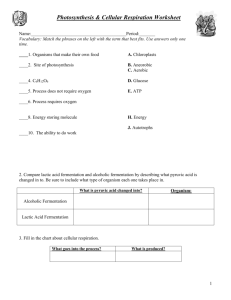1st Quarter Assessment Study Guide
advertisement

7th Grade STUDY GUIDE – QUARTER 1 ASSESSMENT From Chapter 1: You must be able to put the steps of the Scientific Inquiry Process in the correct order: 1) Pose a question 2) Develop a hypothesis 3) Design an experiment 4) Conduct an experiment 5) Collect and interpret data 6) Draw a conclusion 7) Communicate the results You must be able to identify the independent (manipulated) variable, dependent (responding) variable and controlled variable(s) in a given experiment. independent (manipulated) variable is what the scientist CHANGES dependent (responding) variable is what the scientist MEASURES controlled variables are all the things that are the SAME in all the groups Understand and be able to identify examples of the following scientific skills: observe, predict, infer, classify and evaluate. observing/observation – use one or more of your senses to gather information; what you can SEE in your experiment predicting/prediction –making a statement or claim about what will happen in the future based on past experience or evidence inferring/inference (infer) – explain or interpret the things you observe; what CONCLUSIONS you can make based on your observations classifying – grouping together of items that are alike in some way evaluating – comparing observations and data to reach a conclusion about them From Chapter 3: Know the correct formulas for photosynthesis and cellular respiration (in words). Photosynthesis = LIGHT ENERGY + CARBON DIOXIDE + WATER = OXYGEN + GLUCOSE Cellular Respiration – OXYGEN + GLUCOSE = ENERGY + CARBON DIOXIDE + WATER ; cells use OXYGEN to release energy (formula opposite of photosynthesis) Fermentation – cells DON’T use OXYGEN to release energy Know where (which organelles) photosynthesis and cellular respiration take place. Photosynthesis takes place in the chloroplast Cellular Respiration takes place in the mitochondria Know which types of organisms perform photosynthesis and cellular respiration. Only producers or autotrophs conduct photosynthesis All living organisms (autotrophs and heretotrophs) conduct Cellular Respiration Know what fermentation is, the types of fermentation and what each type produces. alcoholic fermentation – creates a small amount of energy; does not use oxygen; creates carbon dioxide gas; yeast is a common organism to conduct this thype of fermentation lactic acid fermentation - creates a small amount of energy; does not use oxygen; creates lactic acid in muscles frequently making them sore after the process has occurred From Chapter 4… just lessons 1 and 2: Know the difference between biotic and abiotic factors. biotic factor – LIVING ORGANISMS in an ecosystem abiotic factors – NON-LIVING things in an ecosystem Know how an ecosystem is organized and what each of the following terms means. (Understand the difference between an organism (species), population, community and ecosystem.) organism (species)- a group of organisms that can mate with each other and produce offspring that can also mate and reproduce population – a GROUP of individuals of the SAME SPECIES community – DIFFERENT POPULATIONS living in same area ecosystem – all the living and non living factors that interact in an area Understand the energy roles of organisms (producers, consumers (herbivores, carnivores, omnivores, scavengers) and decomposers. Know how they are arranged in a food web/energy pyramid: producers, first level consumer, second level consumer, etc and how some organisms can take the role in more than one level. producer – an organism that can make its own food (autotroph) consumer – an organism that cannot make its own food/obtains energy by feeding on other organisms (heterotroph) herbivore – consumers that eat only plants carnivore - consumers that eat onlyanimals omnivore - consumers that eat both plants and animals scavenger – a carnivore that feeds on the bodies of dead organisms decomposer – organisms that break down biotic wastes and dead organisms and return the raw materials to the ecosystem Understand how energy flows through an ecosystem. Understand that in an energy pyramid 90% of the energy is released by the organism as heat and only 10% of the energy is passed on to the next level’s organism. energy flow – sunlight to plants(producers) to herbivore (primary consumer) to carnivore (secondary consumer) etc









